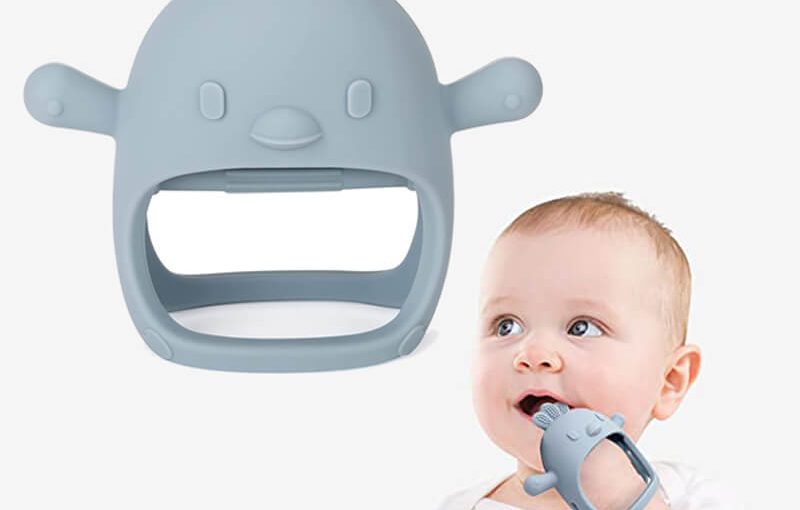The Importance of Teething for Babies
Teething is a significant milestone in a baby’s development. It typically starts around six months of age. As the teeth push through the gums, babies experience discomfort. They might exhibit fussiness, drooling, or even a mild fever. Baby teething toys provide a way for babies to self-soothe. Chewing on these toys offers counter-pressure to the emerging teeth. It can ease the discomfort and pain babies feel. Additionally, teething toys can aid in developing motor skills. Babies learn to grasp and manipulate the toys, which boosts hand-eye coordination. Moreover, teething can stimulate the gums and promote healthy oral development. By choosing safe baby teething toys, we ensure that this critical period is also a secure one for our little ones.
Types of Baby Teething Toys
Choosing the right baby teething toys is crucial for your baby’s comfort and safety. There are various types of teething toys available on the market. Let’s explore some popular options parents consider:
- Silicone Teething Toys: These are soft and flexible. Silicone is durable and easy to clean. They often come in bright colors and various shapes to engage babies.
- Natural Rubber Teething Toys: Made from natural materials, these toys are a eco-friendly option. They are also soft and chewable, ideal for sore gums.
- Wooden Teething Toys: These toys offer a firm surface. They are often chosen for their natural, non-toxic properties. However, it’s important to ensure they are smooth and untreated.
- Plush Teething Toys: Plush toys with a teething component are great for cuddling and can provide oral stimulation as well.
- Teething Rings: These are classic and easy for babies to hold. They can be made from various materials including silicone, rubber, or plastic.
- Teething Jewelry: Designed for parents to wear. These necklaces and bracelets are safe for babies to chew on while being held.
- Freezable Teething Toys: These can be chilled in the refrigerator. The cold helps to numb the gums and reduce swelling and pain.
It is important to choose toys that are appropriate for your baby’s age and to always supervise their use. Remember that baby teething toys should be safe, non-toxic, and free from small parts that could pose a choking hazard.
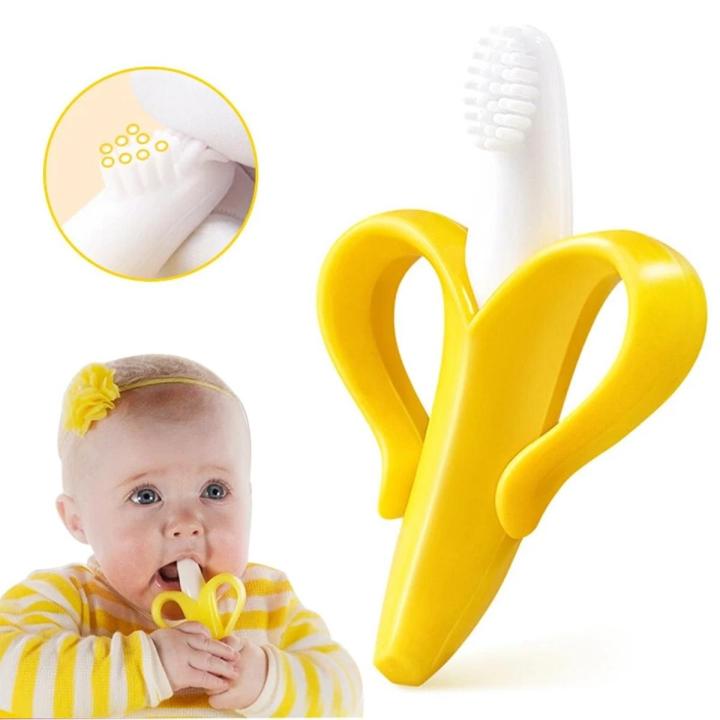
Features of Safe Teething Toys
When it comes to baby teething toys, safety is paramount. Here are essential features to look for:
- Non-Toxic Materials: Always choose toys that are free from harmful chemicals like BPA, PVC, and phthalates. Teething toys should meet safety standards to ensure they are safe for babies to chew on.
- Durable and Chew-Resistant: The toys must withstand vigorous chewing without breaking apart. Check for strong, durable materials that resist tears and punctures.
- Easy to Grip: Babies must be able to hold the toys easily. Look for teething toys with handles or textures that small hands can grasp.
- No Small Parts: Avoid toys with parts that could come loose. Small parts are a choking risk for infants. Ensure teething toys are of a safe size and design.
- Hygienic and Easy to Clean: Select toys that won’t harbor bacteria. They should be simple to clean, preferably dishwasher-safe, or easy to wipe down.
- Smooth Edges: Toys should have soft, rounded edges. Sharp or rough edges can hurt your baby’s sensitive gums.
Keeping these features in mind will help you find the safest baby teething toys for your little one. Remember, the best teething toy is a safe, clean, and appropriate one for your baby’s age and development stage.
How to Clean and Sterilize Teething Toys
Keeping baby teething toys clean is as important as choosing safe ones. Germs can grow on toys quickly. This could harm your baby’s health. Here’s how to clean and sterilize teething toys effectively:
- Use Soapy Water: Wash toys with warm soapy water. Do this after each use. It removes bacteria and germs.
- Sterilize Regularly: Boil the toys in water for about five minutes. This kills most bacteria and viruses. Only do this with toys that are heat-safe.
- Dishwasher Method: If toys are dishwasher-safe, run them through a cycle. Use hot water and a heated drying cycle for best results.
- Natural Cleaning Solution: Use a mixture of vinegar and water to soak the toys. Rinse them well afterward.
- Dry Completely: After cleaning, let the toys air dry. Moisture can breed bacteria, so ensure toys are completely dry before returning them to your baby.
- Check Manufacturer’s Instructions: Always follow cleaning guidelines provided by the toy manufacturer. Some materials may have specific care instructions.
Remember, clean baby teething toys keep your baby safe. Regular cleaning also extends the life of the teething toys. Always inspect toys for damage after cleaning. If a toy is damaged, it’s time to replace it.
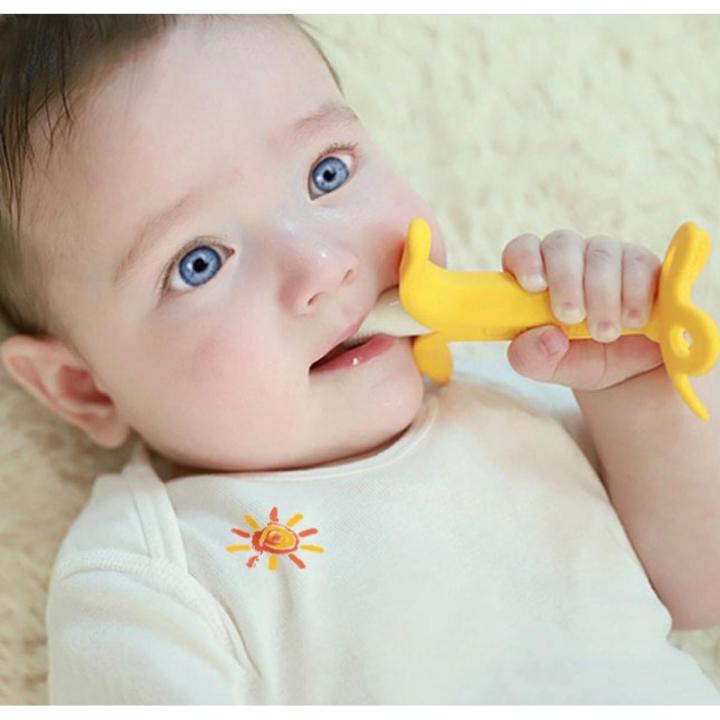
Recognizing Unsafe Teething Toys
To protect your baby, you need to recognize unsafe teething toys. Unsafe toys can be harmful. Look for these signs:
- Broken or Damaged: Inspect toys for cracks or tears. A broken toy can cause choking.
- Loose Parts: Toys with parts that can come off are a no-go. Loose pieces can be swallowed.
- Peeling Paint or Finish: Paint should not flake off. This could be toxic if swallowed.
- Unlabeled Materials: If you can’t tell what it’s made of, don’t choose it. Unknown materials might be harmful.
- Loud Noises: Avoid toys that are too noisy. Loud sounds can harm your baby’s hearing.
- Banned Substances: Check online for recalls and safety alerts. Toys with banned substances are unsafe.
- Long Cords or Straps: Cords can pose a strangulation risk. Stay away from these designs.
Choose baby teething toys wisely. Unsafe toys can put your baby at risk. Always assess toys for signs of wear or damage.
DIY Teething Relief Solutions
DIY teething relief can be a safe, effective, and budget-friendly option for parents. With a few simple items, you can create soothing solutions to ease your baby’s teething discomfort. Here’s how:
- Frozen Washcloth: Soak a clean washcloth in water and wring it out. Place it in the freezer until it’s cold. The chill can numb sore gums.
- Cold Spoon: Chill a metal spoon in the fridge. Always check the temperature to make sure it’s not too cold.
- Massage Gums: Use a clean finger to gently rub your baby’s gums. This can provide pressure that feels good.
- Homemade Teething Biscuits: Make teething biscuits using healthy ingredients. Ensure they are hard enough for chewing but dissolve easily to prevent choking.
- Softened Fruits: Offer cooled, softened fruits in a baby feeder. This provides a natural and tasty way to soothe gums.
These DIY solutions are simple and have been used by parents for generations. Remember, never leave your baby unattended with these items and always consult your pediatrician if you have concerns about your baby’s teething process. DIY teething relief is just one more way you can help your little one navigate this important stage safely.

When to Replace Teething Toys
Ensuring that your baby’s teething toys are always in good condition is vital for safety. Here are some guidelines on when to replace them:
- Wear and Tear: Check for signs of significant wear. Look for thinning, deep teeth marks, or changes in texture. If you find these, it’s time for a new toy.
- After Illness: Replace the toy if your baby was sick. This prevents re-exposure to any lingering germs.
- Post Damage: Any crack, chip, or break means it’s time to discard the toy. These can be choking hazards.
- Regular Timeline: Even without visible damage, replace soft plastic or rubber teething toys every two months. They can develop micro-tears that harbor bacteria.
- Loss of Structural Integrity: When a toy becomes too flexible or misshapen, it won’t provide the necessary relief for your baby.
- Safety Recalls: Stay informed about product recalls. If a toy you own gets recalled, stop using it immediately and follow the recall instructions.
By keeping these replacement tips in mind, you can ensure that your baby’s teething toys remain a safe and healthy aid during this developmental phase.
Best Practices for Using Teething Toys Safely
Ensuring the safe use of baby teething toys involves more than just choosing the right products. Here are best practices that every parent or caregiver should follow:
- Supervise at All Times: Never leave your baby unattended with a teething toy. Stay close to monitor their activity.
- Follow Age Recommendations: Use toys that are designed for your baby’s age. This ensures that the toy is suitable for their size and developmental stage.
- Regular Inspections: Before each use, check the toy for any damage. Look for signs of wear, like cracks or tears, that could pose a risk.
- Teach Proper Use: Show your baby how to use the toy correctly. This means encouraging them to chew, not throw or bang the toy.
- Update as Baby Grows: As your child grows, their needs change. Update teething toys to match their new teething stages and motor skills.
- Clean After Outdoor Use: If the toy goes outside, clean it when you return. This removes dirt and germs the toy may have picked up.
- Avoid Sharing: Do not let other children use your baby’s teething toys. This helps prevent the spread of germs.
- Use a Teething Toy Holder: Consider using a holder to prevent the toy from falling on the floor frequently, but make sure it’s a safe design with no long cords.
- Educate Caregivers: Make sure all caregivers know these best practices. This includes babysitters, grandparents, and daycare staff.
By adhering to these practices, you can ensure that your baby reaps the benefits of teething toys safely and effectively, keeping discomfort at bay without introducing new risks.
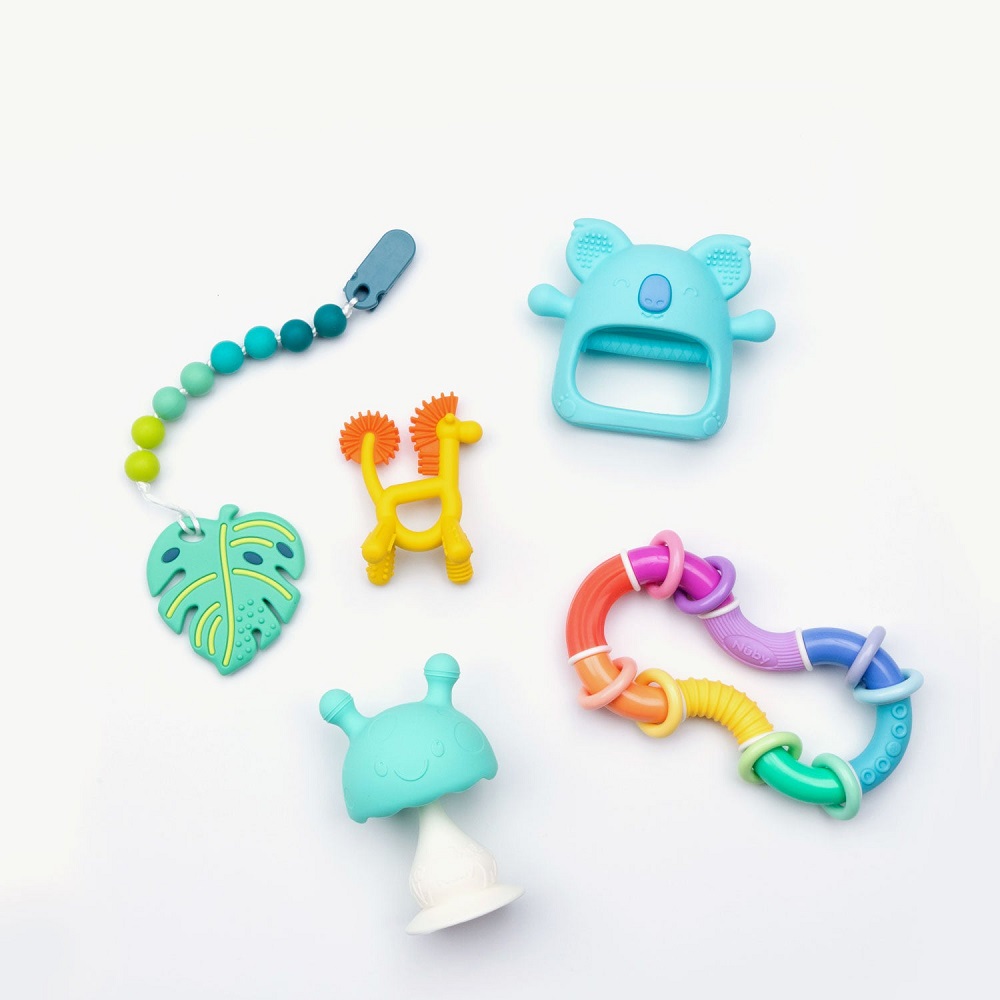
Engaging Teething Toys: Stimulation and Fun
The Role of Bright Colors and Patterns
Colorful, vibrant teething toys can stimulate babies’ senses and keep them engaged. Babies are naturally drawn to bright colors and interesting designs, which can help keep them amused during the teething process. Toys featuring bold hues and playful patterns can encourage visual exploration, making them more enticing for babies.
Look for toys that incorporate various colors and shapes. Engaging designs can capture a baby’s attention and help hold it, allowing them to explore the toy while also soothing their sore gums.
Multi-Functional Features
In addition to aesthetics, many teething toys now come with multi-functional features. Some toys combine teething surfaces with rattles, squeakers, and even sensory parts—such as crinkly materials—that add excitement. These features provide additional stimulation, making the teething experience more enjoyable for babies.
Parents should consider choosing toys that offer several sensory experiences. The combination of textures, sounds, and colors can create a well-rounded toy that keeps babies engaged and happy during teething discomfort.
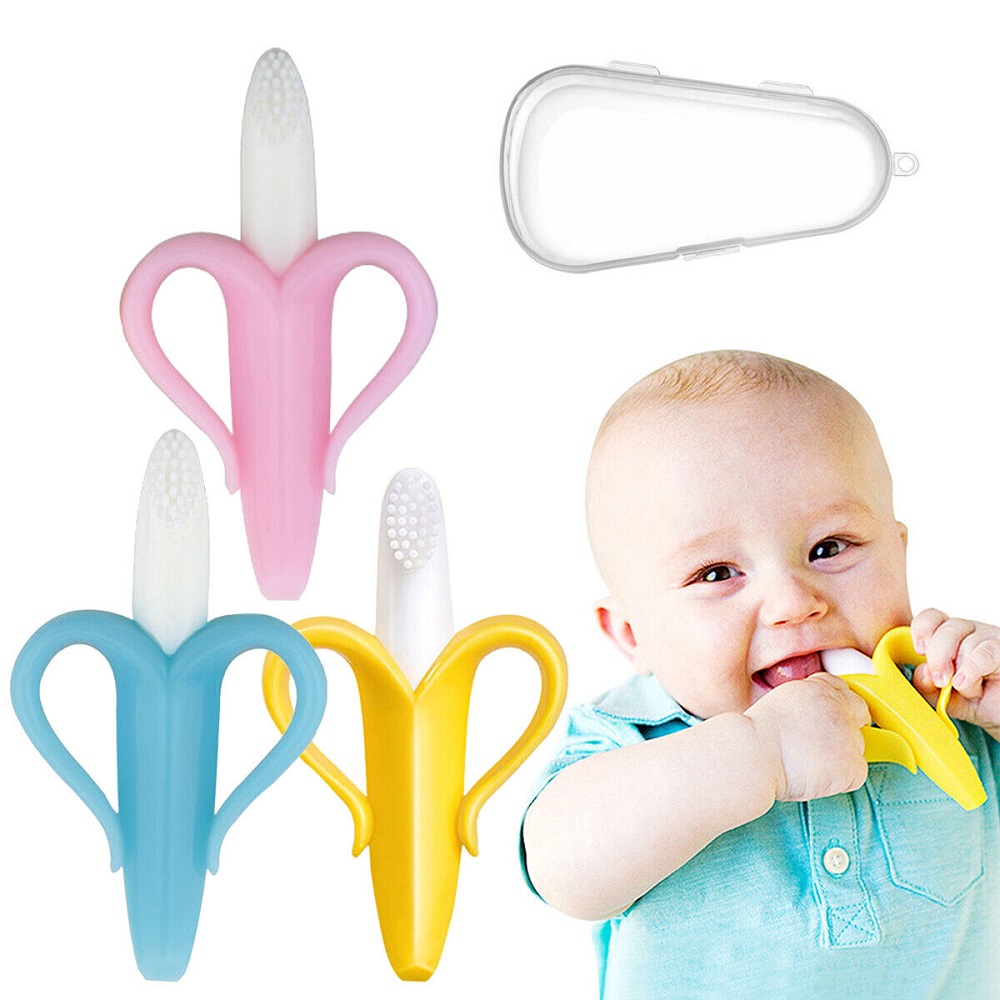
Selecting the Right Teething Toys for Your Baby
Observing Your Baby’s Preferences
When it comes to selecting the right baby teething toys, every baby is unique. What works for one child may not work for another. Parents should observe their baby’s preferences and behaviors while teething to identify which toys provide the most comfort and relief.
Encouraging exploration is essential, as babies may prefer specific textures, colors, and shapes. Offering several options can give parents insight into what their child finds most enjoyable and effective. Variety in teething toys can also prevent boredom as babies navigate this critical phase.
Evaluating Quality and Brand Reputation
Lastly, it is beneficial to evaluate the quality of the teething toys purchased. Choosing well-known brands that prioritize safety and quality in their products can provide peace of mind to parents. Reading reviews and gathering recommendations from other parents can be helpful.
Investing in high-quality teething toys is a wise decision, as they will last longer and better withstand the rigors of daily use. Quality toys can provide effective relief during teething while also being safe and reassuring for parents.
Supporting Your Baby Through Teething
In conclusion, teething can be a challenging phase for both babies and parents. Choosing effective teething toys is essential in helping alleviate discomfort. By considering materials, textures, safety, and functionality, parents can select the best options for their little ones. Prioritizing hygiene and ease of cleaning further ensures a safe experience throughout the teething process.
Offering a range of baby teething toys allows babies to explore different sensations while providing comfort during this critical time. By observing their baby’s preferences and evaluating the quality of toys, parents can create a positive teething experience. With the right tools in hand, families can navigate this phase with confidence and support their little ones through teething challenges. Investing in the right teething toys promotes comfort, ultimately encouraging happier babies and healthier smiles.
